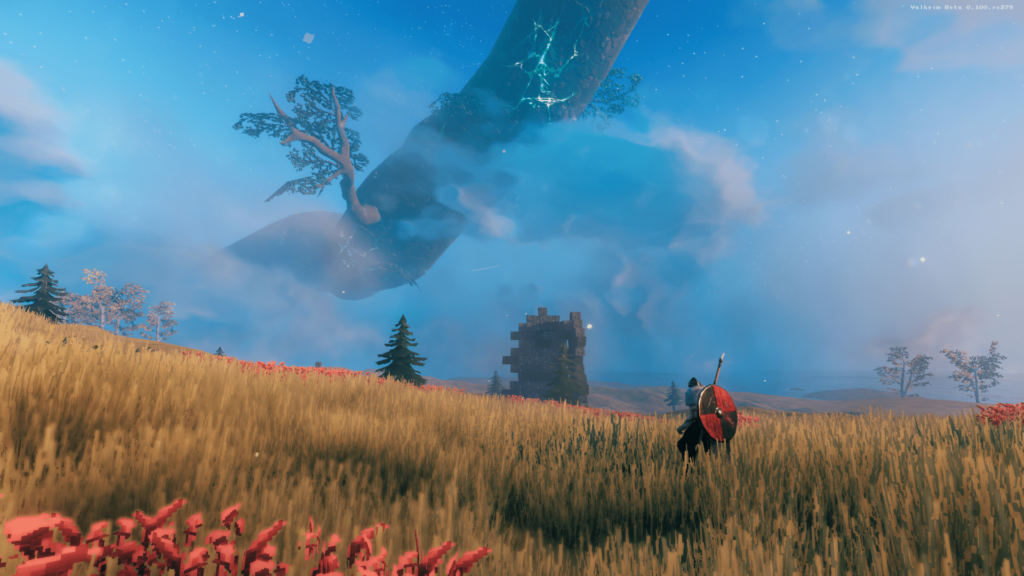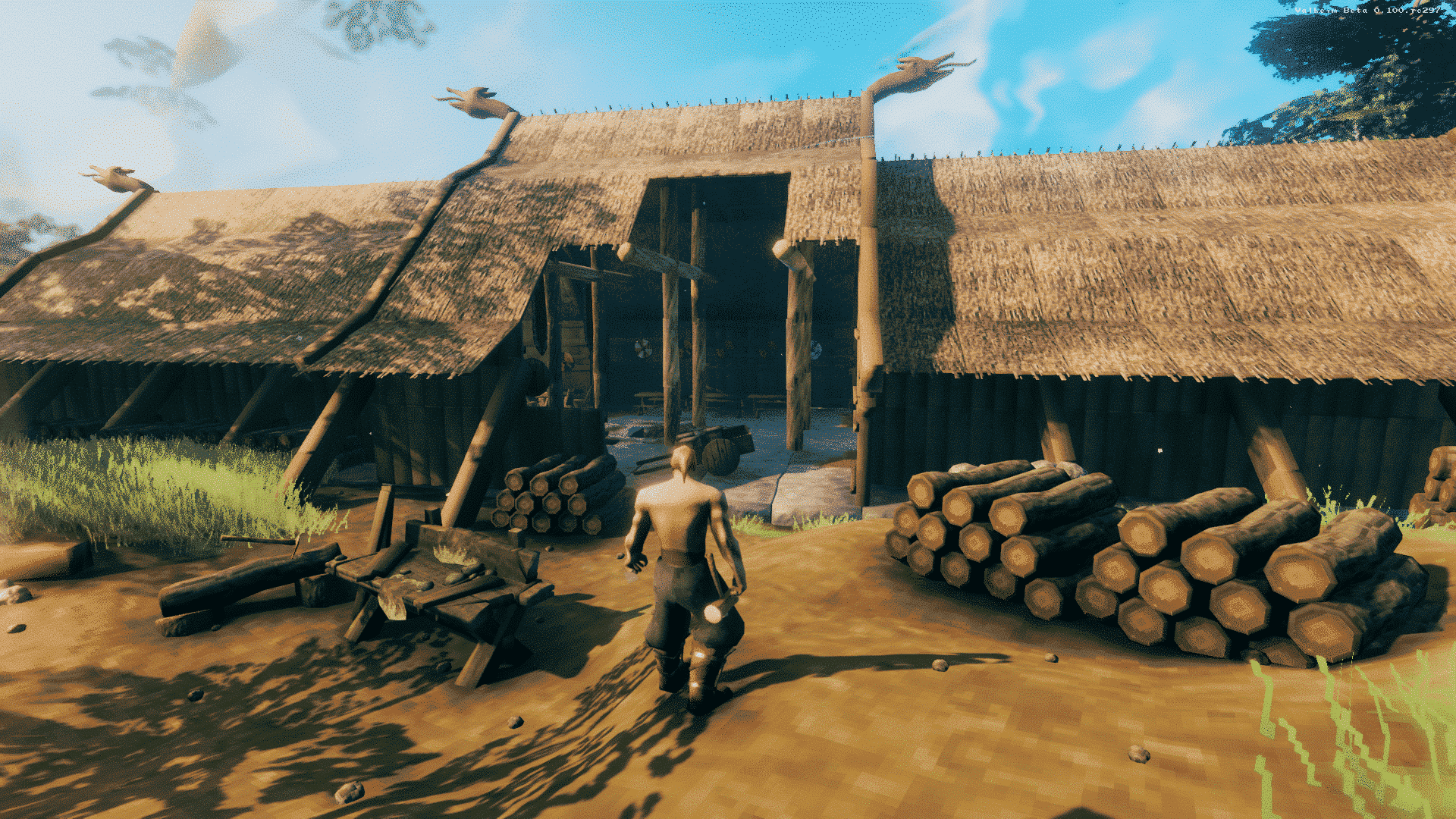Valheim: The Viking Survival RPG that Stunned Steam
-
Primordial boss fights to remember
-
Sail your longboat to glory
-
Feel the grind when gathering resources
-
A few UI & UX aspects to polish
I started playing Valheim off the back of Assassin’s Creed: Valhalla. You know the feeling; you get into the atmosphere of Viking mythology, and you just don’t want it to end. Well, Valheim is more than just a simulator of Viking or Norse life.
Firstly, I didn’t imagine this game would be anything close to beautiful. According to interviews with Swedish creators Iron Gate, this has been in development for about 3 years, put together by a team of just five people. Valheim is a survival crafting Role Playing Game, with the option to toggle PvP and co-op play with a group of up to nine friends. Having received 10/10 on Steam reviews while still in Steam Early Access, it’s quickly reached over 4 million Viking players.
The best way for me to set the scene for this review is thusly. I’ve experienced fewer bugs, distractions, or poor user design in the Steam Early Access version of Valheim than Cyberpunk post-launch—with double the development time and monumentally more resources behind it. This is the standard Valheim sets—it’s, generally, polished and refined and not just by Early Access standards. Valheim manages to bring something new to a tried-and-true game style.
Honour Odin and Bring Order to Valheim
On the surface, Valheim is, admittedly, another one of those familiar survive and thrive games that make for ideal online co-op games with your friends. I firmly believe the supernatural Viking theme is what has allowed this game to stand out from its competitors on Steam. To start with, I’m unceremoniously airlifted by a Valkyrie into a random point on the map in the world of Valheim, mostly naked and with only my fists for company. I’ve had worse weekends!
Immediately I was forced to get to grips with the survival aspects that follow the same general formula as similar games like Rust. You follow a clear progression by gathering resources, crafting, and building. Alongside these main mechanics is the narrative, which we mostly encounter through the initial scrolling text at the top of the game. Then, through Hugin the Valkyrie, who follows us with helpful tutorials and story exposition.
While other survival and crafting games leave you in an open world to interact with other players and basically make your own stories happen, Valheim has a very clear boss fight dynamic that gives you a sense of more purpose and, quite literally, direction.

Each biome, or in other words, area type, has its own assigned boss quest. You need to complete a task to unlock the boss fight, and then you have to square up to whichever of the current five mythological bosses you’ve picked to take on. These bosses are memorable, immense, and entrancing. The visuals of Valheim are a mix of Minecraft-style voxel structures and dewy, glowing highlights, and you can appreciate it most in the eerie creature designs.
The story of Valheim acts more like a backdrop, a picturesque, otherworldly setting where you can plunder, create Viking villages, or watch the Tree of Life floating high above you. The real stories come from the procedurally generated world coming to life around you. You honestly can’t predict what you’ll encounter or where, whether you’ll get ambushed by a troll in the mountains or eaten alive in the Black Forest. This is a game where the stories take you—and your friends—by surprise.
Getting to Grips with Valheim
Once I made it past the initial basics—making shelter, hunting for supplies, crafting weapons—I felt the RPG element come through. Playing in single-player mode was a good way to go for my first 10 hours of gameplay. It allowed me to experience a simple, almost lonely, Viking life. I was faced with upgrading armour and weapons to defeat intimidating bosses from myth and legends single-handedly. I got a good look into how the creators managed to fill every space with options and choices to decide your own Norse path to reclaiming a place in Valhalla.
The moment I really felt like a Viking was when I was sailing to another biome. I’d been repairing and upgrading my ship for hours, as well as collecting resources that would keep me alive in the snowy mountain regions that had previously killed me. Sat on my longship, steering it to victory with the setting sun glowing in the sky and the wind rustling my particularly glorious beard, I’ve never felt more like a Viking warrior. I’ll admit the sailing is a handful. Still, the creators did a commendable job of including so many usable mechanics in the gameplay—even with the game being at an early access stage.
The user design, on the other hand, isn’t one of my favourite aspects. I found the menus a bit messy and ugly, especially when comparing Valheim to other indie RPGs. It didn’t feel intuitive, particularly in cases like switching between handheld items. It would’ve been my instinct to go for the mouse wheel to scroll quickly and easily through my items, particularly when my other hand would likely be busy on the keyboard if I met an enemy and was trying to move back while also switching to the flint knife.
The user experience isn’t awful and didn’t take me out of the game. However, it’s a reminder that Iron Gate never expected their relatively small game to get downloaded by millions of players, especially in its unfinished format.
At the other end of that spectrum is the procedurally generated map. If the tab menus are unattractive, the world design is remarkable. The art style is… different, which is a good thing when you have a sea of 4k next-gen games to contend with. Valheim is a testament to paring things back. Sitting squarely between Minecraft and Fable graphics, Valheim is a visually stunning title.
The world itself can be seen in the top corner map, generating as you move through the areas. Procedural generation is another way of saying that the computer takes a selection of components, and then according to some programmed rules, creates a partly randomised world around the player. The world you explore is yours alone and is highly unlikely to be exactly duplicated for any other player, even when you have millions of them.
Survival Essentials with a Nordic Twist
If you’ve played any survival game, you know the essentials. Valheim doesn’t reinvent the genre in this regard. You punch, chop, cook, and craft materials to use in recipes that you learn as you progress. In this sense, I found the progression and the survival element linked up to a satisfying degree. The more of the basics I did, the better I got at them, as you level up your skills right from the start. As with most survival RPGs, experience makes life easier. As I advanced further into the game, I noticed small but considerable changes to the usual survival rules.
My favourite change is that you need to eat to keep your health and stamina up, but you won’t starve if you don’t eat. There’s nothing more tedious than getting repeated reminders to eat while you’re busy building or pillaging in your Viking paradise. Your weapons and armour are all repairable, and for the most part, resources are easy to find. This element made me feel like the gods were really watching over me, and reminded me that the world of Valheim, while it’s physics are surprisingly realistic, isn’t a normal world.
Then again, it can feel like the real world when you reach a certain level in the game, and the grind begins. You might spend actual, real days gathering enough resources and upgrades to take on a biome boss. I spent hours getting ahead with armour and weapons before taking on my second boss, and it did get monotonous, chopping, searching, and crafting.

As if self-aware, though, the game constantly throws up the unexpected, like misty, monster-filled dungeons that look straight out of The Witcher 3. I feel an open-world survival craft game puts at least some onus on the player to make it an immersive experience. Yet, even in the dull moments, Valheim seems to touch you on the shoulder, nod wisely, and point you in the direction of a primordial enemy to spice things up.
When it came to combat, it once again took me a little while to notice what exactly it was about Valheim that felt so different. The combat is punishing in its minimalism. There aren’t tricks and multiple button combinations, just a standard hit and dodge. But it’s this simplicity that makes things difficult. With no special combat hacks to rely on, you’re forced to lean on the weapons and armour you’ve created and skills you’ve put the time into upgrading.
Building and crafting is a combination of Minecraft and Terraria. You’re limited in your builds by the piece designs you’re given, but the limitation gave me a solid basis for my imagination. I ended up building more than one intricately framed longhouse with bedrooms, dining halls, and workshops.
Crafting is similarly limited to the recipes you reveal through discovering different resource materials. Again, the real limit is only how creatively you can use the items you craft and how much fun you can have discovering, sailing, cooking, and killing.
Whether you’re playing on your own or with friends, Valheim has longevity up its sleeve. With updates being announced for a total of nine biomes and primordial bosses and quality of life updates to make things run smoother overall, this isn’t just a game to watch out for. It’s a game to get lost in.
Valheim is available to purchase now on Steam.

